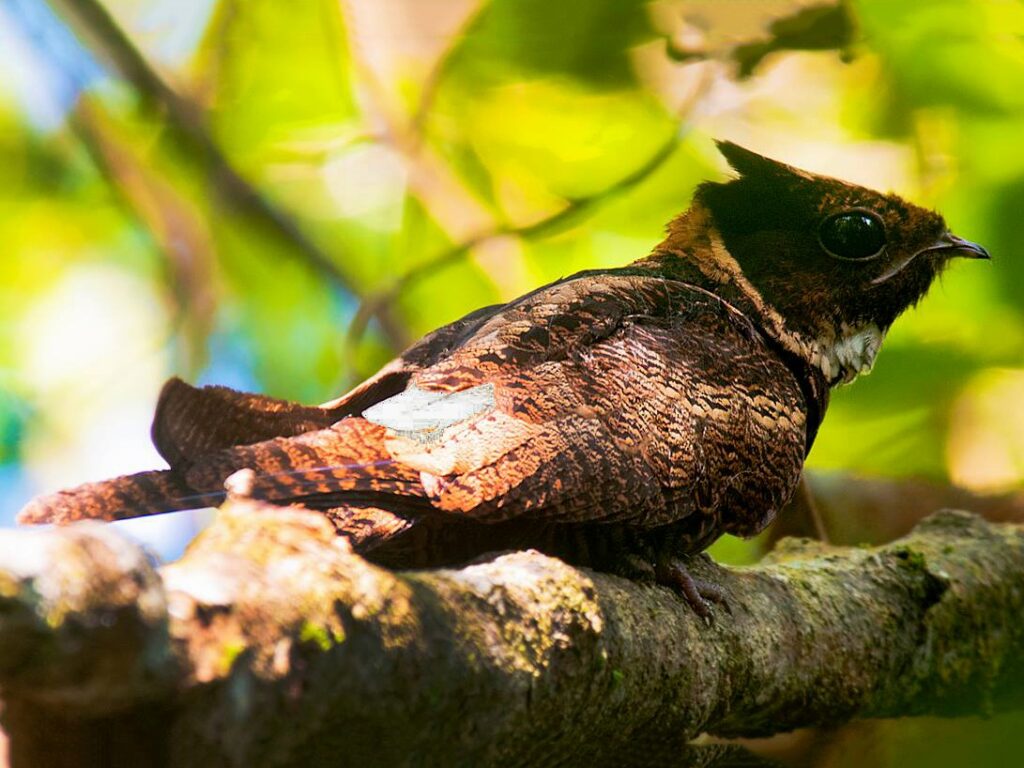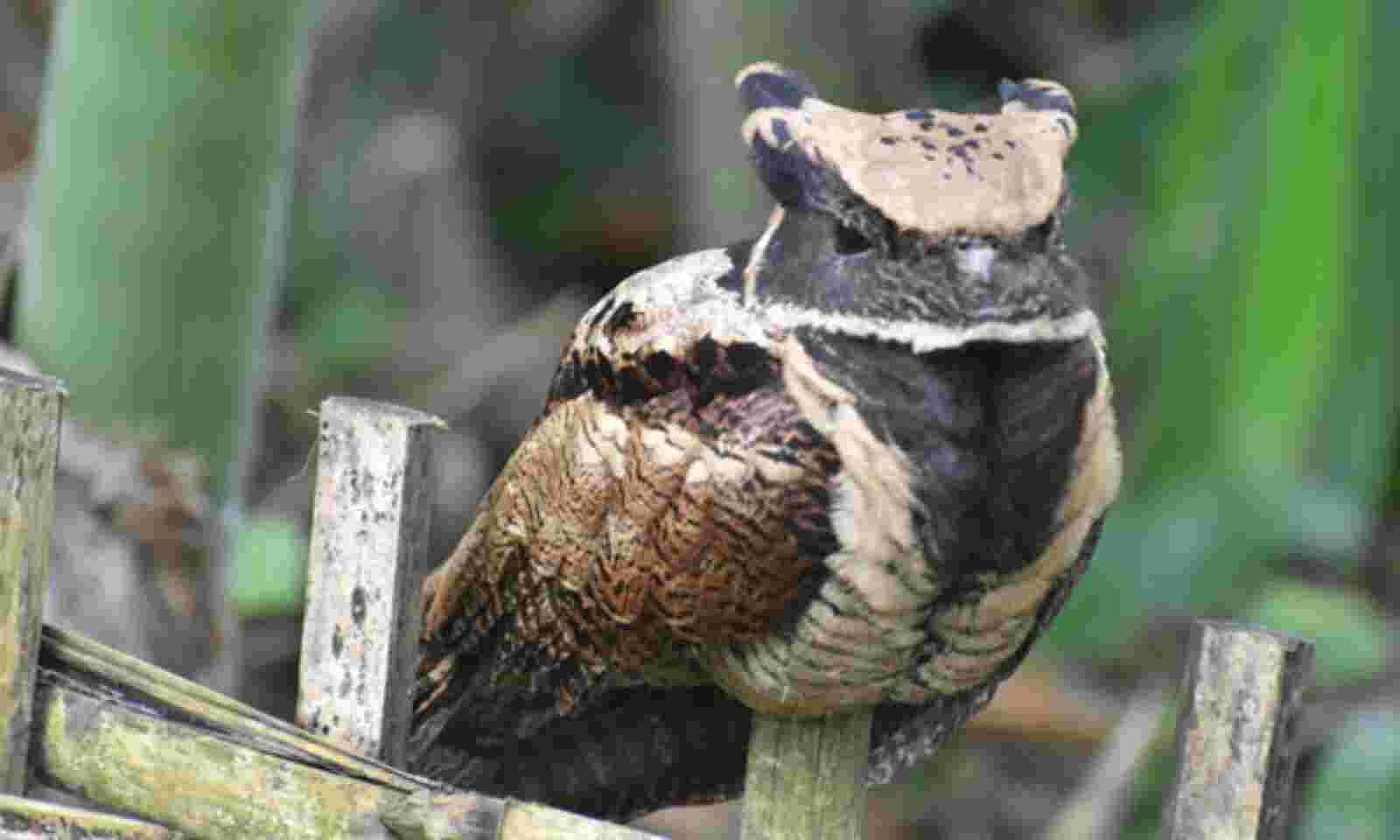Known as The Great Eared Nightjar, they discovered the rare bird in Kakopathar, Assam’s Tinsukia district last week. Locals immediately rescued the bird and alerted the forest to the service. Later, Forest Officer Pirasudan B published a video of the incident on his official Twitter account captioned, “GREAT EARED NIGHTJAR was spotted last week in Upper Assam in Kakopathar. A VERY RARE SIGHTING IN ASSAM. Kudos to villagers for rescuing the bird and promptly informing @assamforest”.
The rescued bird, eared nightjar, is the one that belongs to the largest bird family species, the Caprimulgidae family. The bird is found all across regions of Southeast Asia, including Vietnam, the Philippines, Thailand, Malaysia, Myanmar, Indonesia, Laos, Bangladesh, Sri Lanka, and India, in areas of its natural habitat which include subtropical or moist lowland tropical woods.

Nightjars are mostly the size of sparrows or pigeons, and they protectively cover the bodies in brown and grey, resembling bark or leaves, helping them conceal themselves. Over 80 species in the family and most of them belong to the subfamily Caprimulginae (true nightjars), found all across the globe in distribution except for New Zealand and some other oceanic islands.
Although both subfamilies of nightjars can occupy a vast range of habitats, from rainforests to deserts, they are not very well-known for living in extremely arid desert regions. The most common habitats for them include open countries with some vegetation. Eared nightjars confined to Asia and Australia, and the nighthawks to the new world.
Several species take shorter and longer migrations, but the secretive nature of the family leads to an incomplete understanding of the rare bird’s rare migratory.
The bird was identified as a Great Eared Nightjar after a team of forest department personnel inspected the spot. The morning after, a resident named Deepak Mahanta discovered the bird. Despite being found in South India and Assam being one of its natural habitats, forest personnel predicted a high probability of the bird becoming extinct.
Tazeen Ansari

